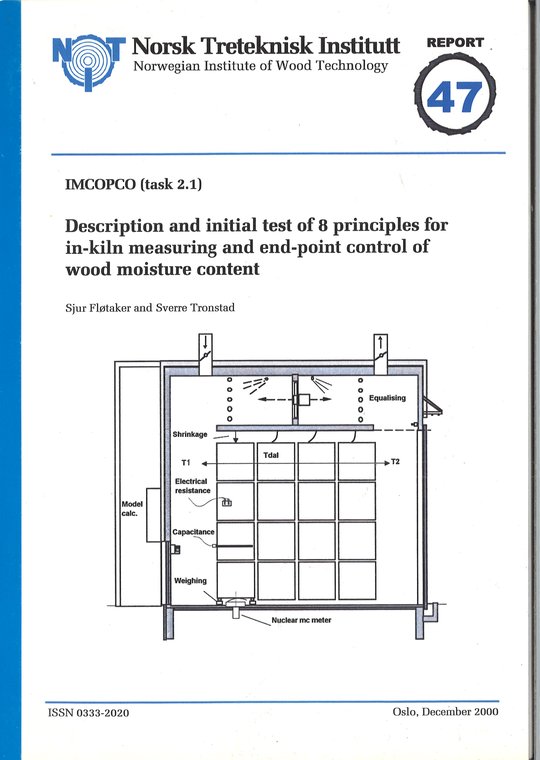47: Description and initial test of 8 principles for in-kiln measuring and end-point control of wood moisture content
Forfattere: Sjur Fløtaker and Sverre Tronstad
Rapport 47, 2000
79 s.
200,- (Gratis for medlemmer)
Last ned
Summary
The objective of this project was to give a general description and to perform initial comparative testing of the most relevant principles for in-kiln monitoring of wood moisture content and end-point moisture control.
The principles described and tested are weighing, electrical resistance, capacitance, shrinkage, neutron moderation, temperature drop, equalising and drying models.
The 8 principles tested show a great difference in accuracy due to the limitation in the principle itself and due to different degrees of calibration and development. Therefore the comparison focuses on the potential accuracy of each of the systems, given their calibration curve (relation between meter reading and actual moisture content) is ideal. As a measure upon the potential accuracy a 95 % confidence interval for the best curve describing the relationship between meter reading and actual moisture content is used.
The different systems show a great variance in potential accuracy, ranging from about 0,4 % to 6 % by use of the oven-dry method as reference.
Only the electrical resistance system, the capacitance system and the drying models are commercially available at the moment. Most of the other systems are presently either being further developed or upgraded by the different manufacturers.
In spite of varying performance of the different principles during the comparative testing, most principles have a potential for being further developed into a level of accuracy and applicability which is acceptable as a means for improved in-kiln wood moisture control monitoring and end-point determination.
